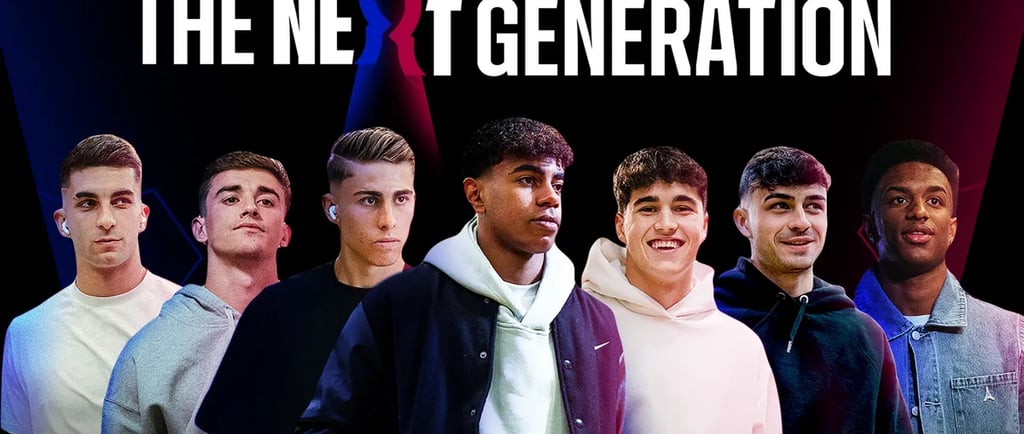FC Barcelona’s Financial Crisis and Path to Recovery
FC Barcelona faced a major financial crisis in 2021 due to costly player deals, high wages, and the impact of COVID-19. Under Joan Laporta’s leadership, the club has taken important steps to restructure finances, secure new sponsorships, and focus on youth development. This article outlines the crisis and the club’s efforts to recover and rebuild for the future.
Kyriakos Lykourgos
5/15/20254 min read


FC Barcelona is one of the most iconic football clubs in the world, with a rich history of domestic and global success. The club has a huge global fanbase and it stands as a symbol of Catalan identity. Even though FC Barcelona was the ‘house’ of the biggest players in the world and it had so much success, the club has recently faced one of the most severe financial crises in European football history. In 2021, football fans around the world were surprised to learn that the club’s total debt had surpassed €1.3 billion.
The Collapse
FC Barcelona’s debt crisis was a result of years of financial mismanagement. The club was spending excessive amounts of money on player wages and high-risk transfer deals that failed to deliver results on and off the pitch. The players did not meet the team’s expectations either on their performance in the game nor in their marketability. Some notable examples are Antoine Griezmann, whose acquisition cost €120 million and Philippe Coutinho who cost €160 million.
By 2020, Barcelona had the highest wage bill in football history, that amounted to over €600 million annually. This figure breached La Liga’s financial fair play regulations and left the club with unsustainable payroll costs.
Another major setback for the team was the COVID-19 pandemic. The pandemic shook the international football waters and it came at a very bad time for the team. Throughout the pandemic the team’s crisis was intensified, with key income streams being eliminated (e.g. match day tickets) and other revenue streams suffered important cuts like the TV rights and sponsorships. In 2020 alone, the club reported €203 million in revenue losses due to the pandemic. The club’s annual wage bill during that period exceeded 100% of its total revenue (exceeding FIFA’s recommendation of 70%).
In 2021, the financial pressure forced the club to part ways with its greatest ever player, Lionel Messi. His departure not only weakened the team on the field but reportedly caused a €137 million drop in brand value.
Another thing that played part in the downfall was the club’s instability in regards to sponsorships. Barcelona had a major sponsorship deal with Qatar Airways worth €35 million-per-year. After the completion of that deal the team signed a new sponsorship agreement with Rakuten in 2017 worth €55 million a year. However in 2022 Rakuten chose not to renew and this further damaged the club. Barcelona’s failure to generate sufficient commercial income, and the difficulty faced in adapting to modern financial practices, were a major indicator of unsustainable operations.
Path to Recovery
FC Barcelona’s financial recovery started with the return of their old president, Joan Laporta. His return to leadership brought major restructuring to the club, with the process followed being a mix of austerity measures, bold commercial deals, innovative financial strategies (even hosting weddings in the team’s stadium) and long-term vision. This restored the club’s competitiveness both on and off the pitch.
Immediate Actions
In an attempt to stabilise the finances quickly, the club sold 25% of its future La Liga TV rights for 25 years. They also sold parts of the Barca Studios (FC Barcelona's media production company). This enabled the club to raise over €700 million in liquidity and brought an enormous relief for short-term financial pressure.
Sponsorships
Barcelona secured a landmark deal with Spotify. In 2022 the club secured a €70 million-per-year agreement for four years that is an all-round sponsorship deal. Spotify has the naming rights of the team’s stadium and the Spotify logo is also featured on the team’s shirt. The shirt sponsorship includes the men's and women's match day shirts and also the training kit. The partnership aims to integrate music and football. The two franchises are doing creative brand activations during the season (e.g. Barcelona’s players wearing Spotify’s artists name on the shirt during games). This sponsorship deal is unique because it is so multidimensional.
Youth Development
During the team's deep financial problems there is less room for expensive signings. The club turned back to its roots and focused on its academy. La Masia (Barcelona’s academy) is considered the best academy in the world. During the last couple of years the club has used its academy graduates like Pedri, Gavi, Lamine Yamal, Cubarsí and more. This is a long-term strategy that will enable the club to reduce wage and transfer costs, as well as create a sense of authenticity.
Operational Changes
The new president introduced stricter financial controls to ensure the past mistakes will be avoided. He initiated stricter financial controls, salary caps and internal audits to enforce discipline in spending and create a sustainable financial model.
Camp Nou and the Espai Barca Vision
A central project to the club's recovery is the redevelopment of their stadium. The Espai Barca project will cost around €1.45 billion and is focused on the ‘rebirth’ of the stadium Spotify Camp Nou and its surrounding area, into a world-class sports and entertainment complex. The redevelopment is expected to generate over €200 million per year. The club hopes to increase the revenue they get because of the hospitality and commercial operations, they also plan on hosting a lot of different non-football related events.
Possible Downsides and Considerations
Barcelona won the 2022–2023 and 2024-2025 league title. Because of the club’s recent success the majority of the fans think that the dark days are far behind, and that the club has finally recovered. However Barcelona’s strategy carries risks. The club’s significant debt and reliance on selling future assets limit its financial flexibility. Unexpected economic changes or poor team performance could reduce revenue, making it harder to meet financial commitments. Moreover the strategy of trading the future revenue can lead to long-term problems for the club. This leveraging may come back to haunt the club in the future.
Final Thoughts
Barcelona can be seen as a great case study in crisis management and brand repositioning. Although the club’s financial troubles are severe, the club shows a willingness to adapt and find ways to set a more clear path for the future. If this recovery plan results in sustainable growth or future instability is uncertain. However the present success and the momentum the club is gaining can be seen as a positive forecast for future recovery and growth.
